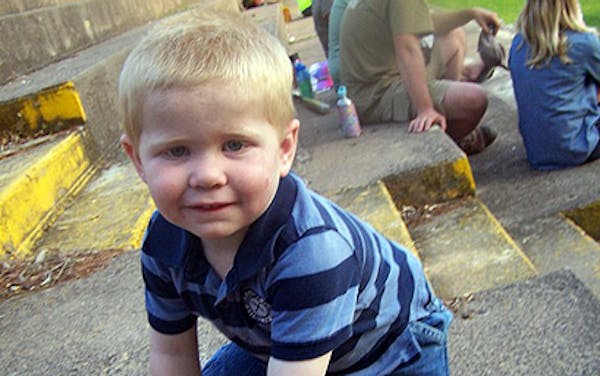As the St. Paul City Council prepares Wednesday to boost the Saints' ballpark budget by another $9 million a contingent of Lowertown denizens who wanted a year-round facility with parking remains unhappy they ended up having little say in the project's design.
That's because the process was gamed from the start, says City Council Member Dave Thune — who nevertheless will be sponsoring the resolutions to amend the ballpark's budget to $63 million and seek environmental grants to help cover the additional costs.
In e-mail exchanges obtained under the state Data Practices Act and in an interview last week, Thune said that St. Paul's Parks and Recreation Department — which is directing the project for the city — misled him into thinking that community feedback would be factored into decisions about the ballpark's look and use.
Thune said he had no idea that a ballpark design already was in place when he helped set up the community task force last year to give the residents some oversight on design and impacts.
"I felt kind of abused a little bit, and I made promises to people that as it turns out I couldn't keep," he said.
The Parks Department, he added, "didn't lie — it just wasn't talked about."
Thune's frustration with what he considers a faulty process helps explain why so many Lowertown residents say they were forced to accept a ballpark plan that they fear will detract from their neighborhood's quality of life.
"I just believe [city officials] made the decision not to involve the community," said John Mannillo, a longtime Lowertown developer who sits on the Lowertown Ballpark Design and Construction Committee, the district council's advisory task force. "I think they see it more as a hindrance than as a benefit. They wanted to get it done, and process can slow things down."
In e-mails sent in April to a downtown district council board member, Thune was more direct.
"It really steams me that the city sold this with the idea that the community would have a real design role and that it would truly be a four-season facility," he wrote.
"They have an enormous budget that took money from funds scheduled for neighborhood projects and it looks like the best we get is a 'nice' one-season ballpark with fireworks and concerts."
Joe Campbell, Mayor Chris Coleman's communications director, said that some design decisions were in fact made early to persuade the state to award the project a $25 million economic development grant last year, such as field alignment, concourse size, elevation and orientation within the site.
About $1 million in public and private funds were spent on design concepts, he said.
"We had a duty to at least make sure that if we're going to apply for state funds, that if we get them we can build a ballpark," Campbell said.
But he noted the city also created the Lowertown Ballpark Design and Construction Committee within the CapitolRiver Council for citizens to offer direction.
Parks Director Mike Hahm said the committee has coordinated community discussions on parking, pushed for an east entrance to the ballpark, addressed issues such as an adjoining dog park and will play a key role with public art.
He added that there are general plans to use the ballpark in winter, although nothing has been decided yet.
As for an alternative plan by art gallery owner Bill Hosko that incorporated part of the Gillette/Diamond Products factory for the ballpark — a plan that won vocal support from several Lowertown residents because it promised hundreds of parking spaces and room for other attractions, such as a velodrome — Hahm said that the city had it analyzed by consultants. They deemed it too expensive and unworkable, he said.
"All of the studies that we've done on parking indicate that there's adequate parking inventory in Lowertown to handle the demands of the ballpark," said Hahm, echoing the city's line on potential parking issues.
Thune, who liked the Hosko plan and considered it more suitable to the Saints' quirky baseball tradition than a conventional ballpark, wasn't buying it.
"There is plenty of parking," Thune said. "Everybody who wants to go to that ballpark is going to be able to park their car. Unfortunately, all of the spots that will be taken first will be the ones that are normally used by people who have already invested in downtown St. Paul and lived there and shopped there."
Still, Thune — who has represented downtown on the City Council for 15 years — will support measures Wednesday to cover $9 million in additional soil remediation and design costs.
The city will kick in $2 million from its state-funded sports facilities pool and $6 million from an internal loan it hopes to pay with outside environmental grants, along with $1 million more from the Saints. The St. Paul Port Authority on Tuesday approved $10 million in "ballpark bonds" as a stopgap measure should the city or the Saints default.
The ballpark is "going to be good for the city, just like the Wild is great for the city," Thune said. "But this could have been a better project. We ought to be doing things that are added-value and avoid doing things that give people a bad taste in their mouth or have side effects that are less than positive. ... But you can't just continually look backwards."
Kevin Duchschere • 651-222-2732

Trail section at one of Minnesota's most iconic spots closing for rehab

Will 'shotgun only' zone for deer in southern Minnesota be abolished?

Four Minnesotans catch salmonella in outbreak linked to basil sold at Trader Joe's

